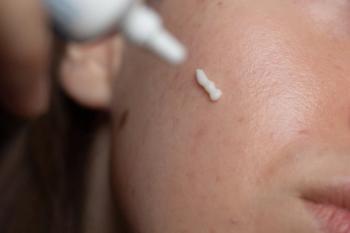
What’s Shaping the Future of Alopecia Treatment, According to Leading Clinicians
From JAK inhibitors to trichoscopy and contact allergy clues, experts at SDPA 2025 shared their top clinical pearls for managing alopecia and hair loss.
Hair loss was a front-and-center theme at the 2025 Society of Dermatology Physician Associates (SDPA) Summer Dermatology Conference in Washington, DC, where several key opinion leaders and experts shared practical, evidence-based approaches for managing and treating alopecia areata, scarring alopecias, and nonscarring hair loss.
Across several sessions, dermatology clinicians received a tool kit of diagnostic and therapeutic insights, from the evolving role of Janus kinase (JAK) inhibitors to the diagnostic power of trichoscopy and the hidden role of allergic triggers. We've compiled a list of the top 3 takeaways from talks on hair loss.
1. JAK Inhibitors Reshape the Treatment Landscape for Alopecia Areata
David Cotter, MD, PhD, of Las Vegas Dermatology, spoke at a session titled “JAK-ing Up Alopecia Areata,” providing attendees with a deep dive into the immunologic pathways of the disease and a clear rationale for targeting the JAK/STAT pathway.
“We actually have T cells migrating into an area of the hair follicle and causing inflammation that results in hair loss. What we see clinically is usually...circular-shaped areas of nonscarring alopecia that can transform and extend to be complete hair loss in the entire body, and things like alopecia universalis,” Cotter said. “Because of that, it makes a lot of sense to target the T cells to treat this disease, and when we think about some of the best T-cell–targeting medications that we have available to us, those are JAK inhibitors. JAK inhibitors specifically inhibit the signaling pathways that are critical to T cells to not just flourish and develop but also mediate some of the pathologic effects.”
In clinical practice, Cotter emphasized that disease severity, comorbidities, and the extent of scalp or body involvement all inform therapeutic selection. For patients with more widespread or treatment-resistant disease, Cotter recommends reaching for systemic JAK inhibitors, several of which are now FDA approved, including baricitinib (Olumiant; Eli Lilly and Company), ritlecitinib (Litfulo; Pfizer Inc), and, most recently, deuruxolitinib (Leqselvi; Sun Pharmaceutical Industries Ltd).
Cotter also pointed out that although patients with more limited forms of alopecia areata tend to respond better overall, patterns like ophiasis—which are historically considered hard to treat—now respond well with JAK inhibitors. However, it may take months to over a year to see meaningful hair regrowth.
2. Trichoscopy Is a Time-Saving, Diagnosis-Changing Tool
Amy Spizuoco, DO, FAOCD, a Dermatology Times Editorial Advisory Board member and clinical instructor at the Icahn School of Medicine at Mount Sinai, spoke in 2 sessions focused on alopecia evaluation: “The Role of Trichoscopy in Clinical Hair Loss Evaluation” and “Understanding Non-Scarring Alopecia.”
In an interview following the talks, Spizuoco emphasized how trichoscopy has transformed her clinical workflow. “It’s helped tremendously when I look for the different patterns that are seen in scarring and nonscarring [alopecia],” she said. “A lot of times, it prevents me from doing a biopsy and taking more time to get a diagnosis for my patients, and [it's] less invasive, so it’s really helpful.”
By visualizing subtle markers of scarring vs nonscarring alopecia in real time, trichoscopy allows for faster and less invasive decision-making. She encouraged attendees to incorporate it into routine assessments, noting its low cost and high yield. “It’s something we should all be using,” she said. “It’s cost-effective, it’s time-effective, and it helps you avoid missing diagnoses you might not catch otherwise.”
3. When Scarring Alopecia Doesn’t Improve, Think Allergy
Maria Hordinsky, MD, R.W. Goltz Professor in the Department of Dermatology at the University of Minnesota, led a clinical deep dive titled “Spotting Scarring Alopecia Early: Clues, Challenges, and Clinical Pearls.”
Although the session covered many diagnostic challenges of scarring alopecias, her postsession pearl stood out for its clinical relevance: When patients with scarring alopecia are not improving on guideline-directed therapy, consider allergic contact dermatitis.
Hordinsky cautioned that even when clinicians follow best practices, improvement can stall if the patient is unknowingly reacting to ingredients in prescribed treatments or injections.
“Sometimes the treatments [or injections] we prescribe...do have chemicals in them [that] your patient might be allergic to,” she said. In these cases, patch testing may uncover hidden allergens that, once removed, can dramatically improve outcomes.
She also acknowledged the growing momentum in hair research, particularly in scarring conditions, but emphasized the need for more robust clinical trials.
“We need really good, standardized clinical trials to prove what treatments work or don’t work,” she said.
The Bottom Line: Hair Loss Is Heating Up
From efficacious new systemic therapies to nuanced diagnostic strategies and emerging allergy insights, the 2025 SDPA conference made it clear that hair loss management is undergoing a transformation. These expert perspectives not only reflect the current state of care but also point to a future where precision diagnosis and treatment personalization will continue to evolve.
As Hordinsky summed up the state of hair loss research: “Hair is hot,” and for dermatology providers, keeping up with the latest advances has never been more essential.
Make sure to keep up to date with the latest coverage from the conference and subscribe to Dermatology Times to receive daily email updates .
Newsletter
Like what you’re reading? Subscribe to Dermatology Times for weekly updates on therapies, innovations, and real-world practice tips.


















